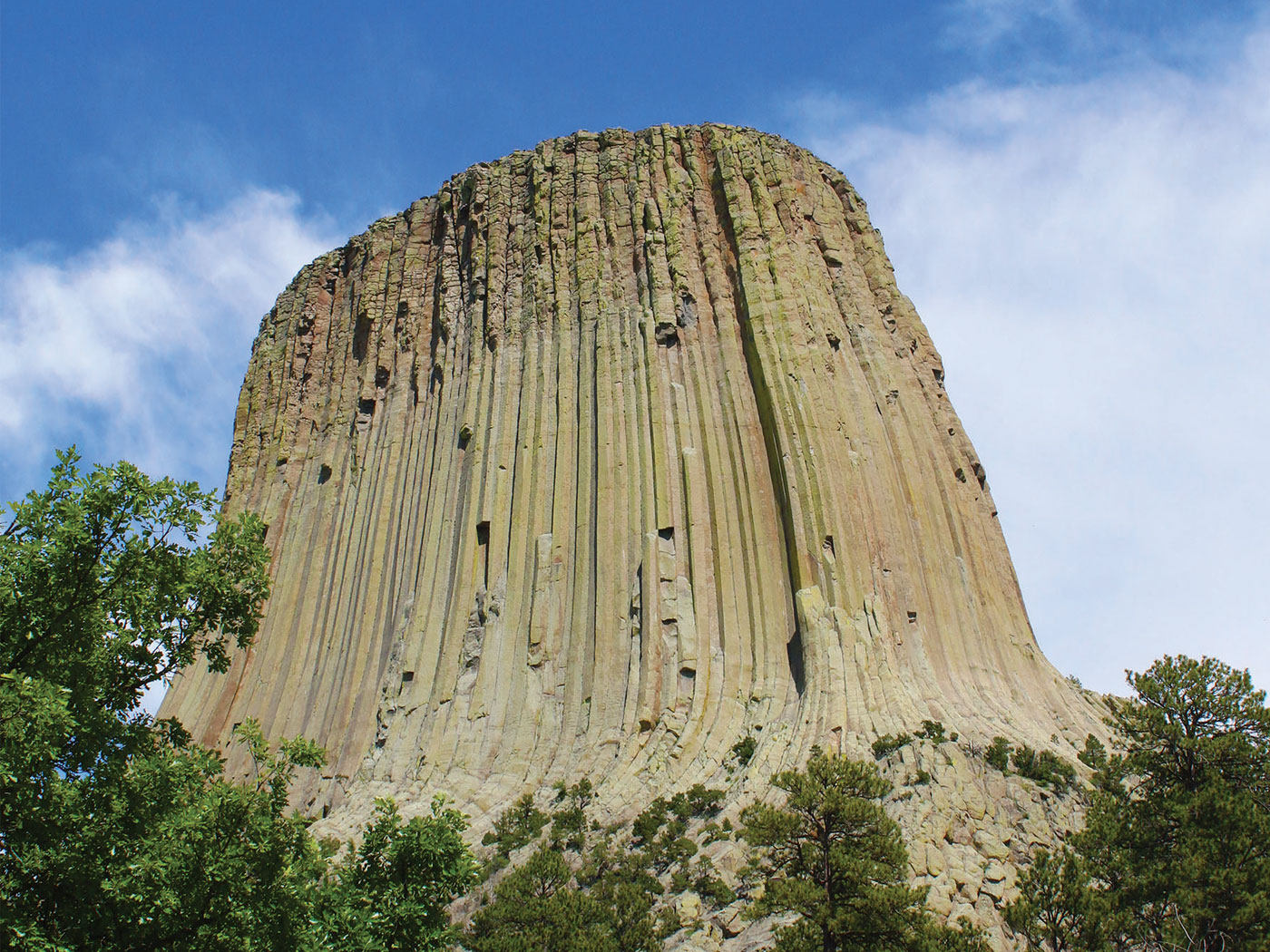A book that has given new hope to "progressive creationists" (creationists who believe in occasional creative acts by God interjected in the evolutionary ages of historical geology) is Creation and the Flood1 by Davis A. Young, Associate Professor of Geology at the Wilmington branch of North Carolina University. Dr. Young advocates the venerable "day-age theory" as the best means for making the Genesis account of creation acceptable to geologists. Although he rejects theistic evolution, he does allow for much evolution in his system, with only a few possible acts of special creation that are essentially impossible to identify in the fossil record. Since Dr. Young is a Christian geologist, his book has been of great encouragement to those Christian intellectuals who have been deploring the modern creationist movement.
The only creationist book to which Young refers in any significant degree (and which he attacks vigorously) is The Genesis Flood.2 He has practically ignored the numerous more recent books of this writer, as well as those of other creationists, not to mention the many relevant articles in the Creation Research Society Quarterly. Furthermore, his book contains neither an index nor a bibliography, unusual omissions for a purportedly scientific book.
He calls the day-age theory, the theory "that I have proposed" (p. 132), but there is nothing new in it except that he distorts Genesis more than most other advocates of the theory, as he tries unsuccessfully to make the order of creation correlate with the fossil record.
There are actually many contradictions3 between these two sequences, but Young eliminates them merely by having the various days overlap each other. After providing in this way for these various discrepancies he says:
If such overlap exists, then all apparent discrepancies between Genesis 1 and science would fall away (p. 131).
By such exegesis, one can, of course, make the Bible mean whatever he wishes.
Young's main Biblical basis for taking the creation days as ages is the idea that the seventh day is still going on, since God is still resting from His work of creation. But the Scripture says that God rested (not "is resting") on the seventh day (Genesis 2:2,3). In fact, Exodus 31:17 says "He rested, and was refreshed." Furthermore, even though God's rest from His work of creation is still continuing, this does not mean the seventh day is still continuing! The fact that God rested on the seventh day in no way precluded Him from continuing to rest on the eighth day and all future days. His one week of six days work followed by a day of rest was sufficient to set the pattern for all future weeks.
The testimony of the Fourth Commandment (Exodus 20:8-11) makes it very plain that the divine week was the pattern for man's week and that the "days" of the one were the same as the "days" of the other. Yet Young believes that the creation days not only lasted almost a billion years each but also that they "overlapped" each other by various amounts. This is a peculiar way for a Christian to deal with the words of God.
Furthermore, Dr. Young glosses over a gross inconsistency in "his" theory. He insists that God is still resting (in order to justify the long day interpretation) but also that the same processes God used to "create" and "make" all things in the six days are still going on (in order to justify his commitment to uniformitarianism). He confesses this to be a problem, but attempts to sidestep it by noting that certain later creative acts of God (e.g., the "creation" of Israel, as mentioned in Isaiah 43:1,15) involved natural processes.
Such reasoning is specious. The fact that God has occasionally directly performed miracles of creation in human history (the acts of creation were supernatural in every case, though they were sometimes accompanied by God's concurrent use of natural processes) in no way changes the fact that He has said He rested from all His specific work of creating and making the heavens, the earth and all its living creatures (Genesis 2:1-3).
Space does not permit further discussion of Young's theory, though it is filled with many other distortions, both of Genesis and The Genesis Flood. He has by no means, answered the overwhelming scientific and Biblical case against the day-age theory.4
Young admits that the literal-day interpretation of Genesis not only is a "legitimate" interpretation (p. 44) of the Biblical text, but also is "the obvious view" (p. 48). His real reason for rejecting it, therefore, is geological, not Biblical. He also rejects flood geology for the same reason, even though he admits the Bible does teach a universal flood (p. 172).
He offers four main geological proofs that a recent creation is impossible. These are: (1) the time required for hot magmas to cool and crystallize; (2) radiometric dating, especially the rubidium-strontium method; (3) the high pressures required to form metamorphic rocks; (4) the time required for continental drift.
"Mature creationists" (the term Young uses for those who accept the Biblical teaching of recent creation and its corollary of flood geology) have, of course, recognized that there are still unresolved geological problems in this model. This fact was stressed repeatedly in The Genesis Flood. Such problems, however, must not be used (as Young does) to warrant rejection of the plain Biblical record in favor of the model of evolutionary uniformitarianism, which also has serious unresolved geological problems. The remaining problems of the flood model can be solved by research — hence the formation of the Creation Research Society and the Institute for Creation Research. Creationists are at a disadvantage, because of their small numbers and financial resources, but they do have the one great advantage of knowing that God, who alone knows the full truth, has written His Word in such terms that its "obvious" implications is one of recent creation and cataclysmic geology.
In the meantime, one would think that Dr. Young could find better evidences for uniformitarianism than the four he proposes. There are few processes involving so many variables and unknowns (and thus so unsuited for determining process rates and time durations) as the formation of igneous and metamorphic rocks, systems of radiometric minerals in such rocks, and the spreading of continents! Uniformitarianism is supposed to be based on present processes, but who has ever measured a cooling batholith or the metamorphosis of a sedimentary rock or the expansion of a sea floor?
Young says (pp. 183-4) that the cooling of New Jersey's basaltic Palisades sill took several hundred years and that of the giant granitic southern California batholith took a million years! He does not indicate how these figures were calculated, but it is obvious they could only be guesses, because of the large number of unknown variables involved in any relevant heat flow and chemical reaction equations. As far as basaltic rocks are concerned, these are at least qualitatively comparable to modern volcanic lava flows, which of course do not take long to cool and crystallize. The cooling of granite batholiths is even more of an enigma, since no one knows for sure how granites are formed in the first place. Furthermore, the flood model would allow at least four thousand years for such cooling. As a matter of fact, the widespread occurrence of geothermal springs and similar phenomena near igneous rocks indicate that the cooling is not yet complete in many cases, and this is hard to explain in terms of an old earth.
Metamorphic processes are even more variable and uncertain than magmatic processes. Temperature, compression, shearing forces, and chemical activity (especially the latter), as well as other factors, determine the rate of this metamorphism. It is absurd to say blandly, as Young does, (p. 197) that the metamorphic rocks of California's Franciscan Formation had to be buried under eighteen miles of sediments in order to be metamorphosed from sedimentary rocks.
All such igneous and metamorphic rocks really seem to require some sort of catastrophic event for their formation. Heylmun says:
We find certain rock types in the geologic column that are not being seen to form ... anywhere on earth today. Where can granite be observed forming? ... Herz attributes the formation of anorthosite to ... possibly a great cataclysm.... It is possible that other rock types were created during and following catastrophic events on earth.5
The current geological fad is plate tectonics and continental drift, and Young has endorsed this system also (p. 199). He should realize, however, that it has not yet been proved, to the satisfaction of many of his fellow uniformitarians.
Why then do a few crabbed earth scientists refuse to accept some or all of the tenets of the 'new global tectonics'? ... Strictly speaking, then, we do not have a scientific hypothesis, but rather a pragmatic model, reshaped to include each new observation.... Obviously, this kind of model is not testable in any rigorous scientific sense.6
Like the evolutionary model itself, the plate tectonics model, incorporating seafloor spreading and continental drift, is so flexible it can be made to fit anything. Like evolution, it has now become a bandwagon, on which all geologists are expected to ride.
The theories of continental drift and sea-floor spreading are highly conjectural, but it is hard to stop anything as big as the floor of the ocean once it has been put into motion.7
It should be noted, however, that many highly-competent geophysicists, especially among the Russians, still vigorously reject the whole idea. One of these had said, for example:
The foregoing discoveries led the author to one conclusion only, that paleomagnetic data are still so unreliable and contradictory that they cannot be used as evidence either for or against the hypothesis of the relative drift of continents or their parts.8
Since it was primarily the paleomagnetic data that led to the acceptance of continental drift in the first place, it is evident that the entire construct rests on a very tenuous foundation.
Nevertheless, the Biblical creationists will accept it when and if it is proved. It is not the idea of drift, but the rate of spreading of the continents that Young uses as a club against flood geologists. In the cataclysmic model, however, it would be possible to accommodate a rupture of the original continent followed by a rapid initial spreading, then a gradual deceleration to the present zero or near-zero velocity in, say, the past 4000 years (the flood model is quite flexible also!)9 This would require only an average of about 5 inches per hour and this could not have been observed after the first century or so without sophisticated geodetic equipment.
As far as radiometric dating is concerned, Young does not even attempt to answer the many criticisms that have been leveled at such techniques by creationists. However, he insists that the rubidium-strontium isochron method eliminates the problem of unknown "initial daughter element" in a radioactive mineral, and thus will give a true age (p. 186). That this is not necessarily the case, however, is now commonly recognized.
One serious consequence of the mantle isochron model is that crystallization ages determined on basic igneous rocks by the rubidium-strontium whole-rock technique can be greater than the true age by many hundreds of millions of years.10
The problem, of course, is that the initial strontium indicated by the isochron method reflects conditions in the mantle from which the igneous rock material originally flowed, not the age of the rock itself. Data from young volcanic rocks in certain Pacific Islands, for example, indicated an "apparent age" well back in the Precambrian.
The data from French Polynesia likewise imply that the source region from which Holocene to Miocene partial melts have been derived had previously maintained its rubidium/strontium heterogeneity for a period of from 1 to 1.5 billion years.
Since all such minerals apparently have their ultimate source in the mantle, it would seem that this problem would render all rubidium dates too old by an indeterminate amount.
In spite of its endorsement by various evangelicals, therefore, this book is both unscientific and unscriptural. Dr. Young is to be commended for rejecting evolution, although even on this position he is inconsistent, being willing to accept the evolution of life from non-life (p. 127) if necessary.
In spite of the continuing problem posed by such unnecessary evangelical compromises with evolutionary geology, the creationist movement (stressing the recent six-day creation and the worldwide cataclysmic flood) is on sound scientific and Biblical ground and thus will continue to grow, as God leads.
REFERENCES
1 This book (1977, 217 pp, $6.95) surprisingly was published by Baker Book House, a firm that heretofore had committed itself to publishing only books advocating strict creationism and a literal interpretation of Genesis.
2 John C. Whitcomb and Henry M. Morris, The Genesis Flood (Philadelphia, Presbyterian and Reformed, 1961).
3 Henry M. Morris, Biblical Cosmology and Modern Science (Nutley, N.J., Craig Press, 1970), pp. 56-62.
4 See for example Scientific Creationism (ed. by Henry M. Morris, San Diego, Creation-Life Publishers, 1974), pp. 214-230.
5 Edgar B. Heylmun, "Should We Teach Uniformitarianism?" Journal of Geological Education, Vol. 19, January 1971, p. 36.
6 John C. Maxwell, "The New Global Tectonics," Geotimes, V. 18, January 1973, p. 31.
7 Daniel Behrman, The New World of the Oceans (Boston: Little Brown & Co., 1973) p. 209.
8 I. A. Rezanov, "Paleomagnetism and Continental Drift," International Geology Review, Vol. 10, July 1968, p. 775.
9 For a brief review of evidences for and against moving continents see Stuart E. Nevins, "Continental Drift, Plate Tectonics, and the Bible." ICR Impact No. 32, February, 1976.
10 C. Brooks, D. E. James & S. R. Hart, "Ancient Lithosphere: Its Role in Young Continental Volcanism," Science, Vol. 193, Sept. 17, 1976, p. 1093.
11 R. A. Duncan and W. Compston, "Strontium Isotope Evidence for an Old Mantle Source Region for French Polynesian Volcanism," Geology, Vol. 4, December 1976, p. 732.*Dr. Morris is Founder and President Emeritus of ICR.
















